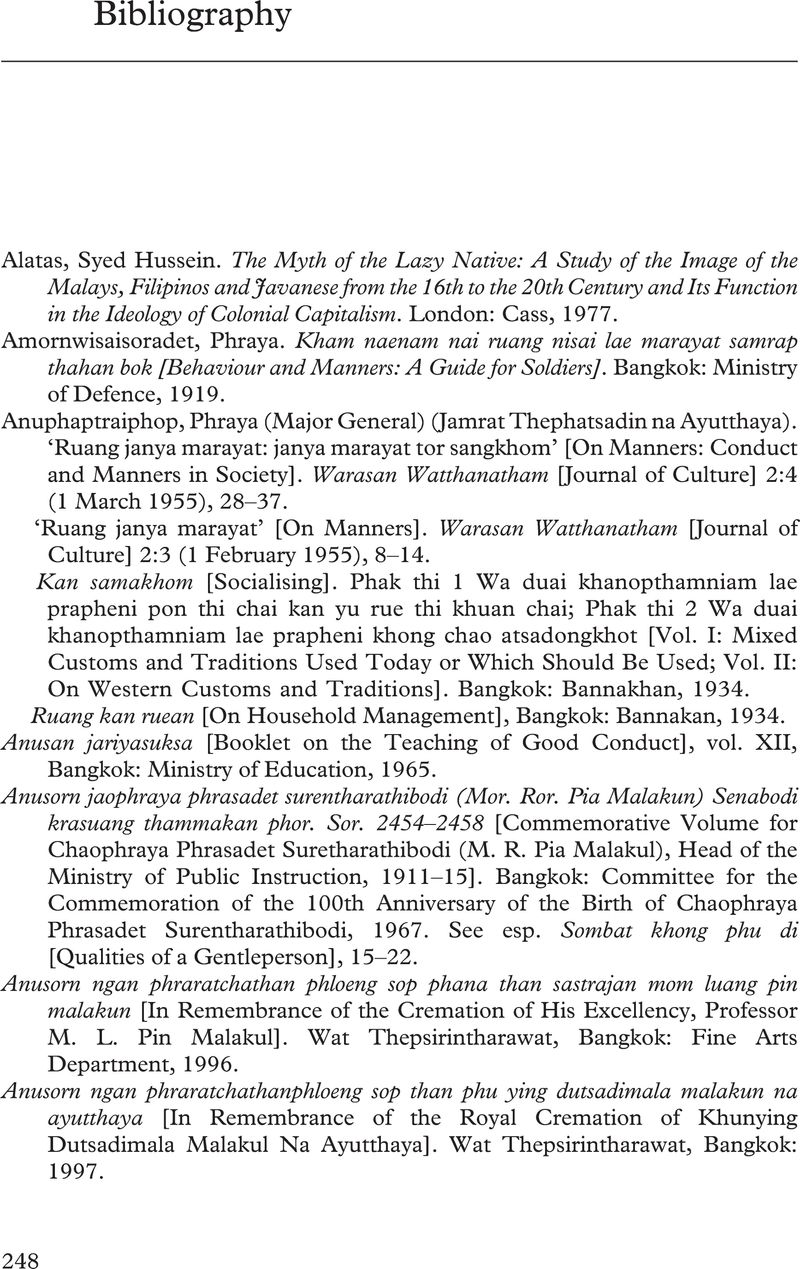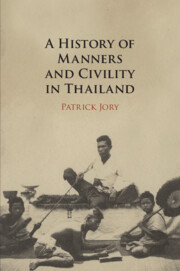Book contents
- A History of Manners and Civility in Thailand
- A History of Manners and Civility in Thailand
- Copyright page
- Dedication
- Contents
- Figures
- Acknowledgements
- Introduction: Manners and the Thai Habitus
- 1 Buddhist Ethics of Conduct and Self-Control
- 2 Manners and the Monarchy
- 3 The Making of the Gentleperson
- 4 Manners in a Time of Revolution
- 5 From Courtiers to Ladies
- 6 Royalist Reaction
- 7 The Passing of the Gentleperson
- Conclusion: Manners in Thailand’s Civilizing Process
- Bibliography
- Index
- References
Bibliography
Published online by Cambridge University Press: 18 December 2020
- A History of Manners and Civility in Thailand
- A History of Manners and Civility in Thailand
- Copyright page
- Dedication
- Contents
- Figures
- Acknowledgements
- Introduction: Manners and the Thai Habitus
- 1 Buddhist Ethics of Conduct and Self-Control
- 2 Manners and the Monarchy
- 3 The Making of the Gentleperson
- 4 Manners in a Time of Revolution
- 5 From Courtiers to Ladies
- 6 Royalist Reaction
- 7 The Passing of the Gentleperson
- Conclusion: Manners in Thailand’s Civilizing Process
- Bibliography
- Index
- References
Summary

- Type
- Chapter
- Information
- A History of Manners and Civility in Thailand , pp. 248 - 262Publisher: Cambridge University PressPrint publication year: 2021



